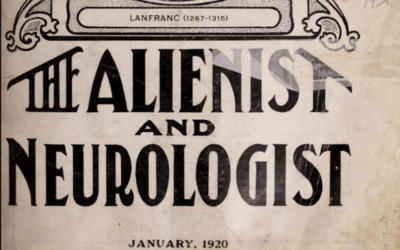Bridging Object Relations and Clinical Innovation

Who was Otto Kernberg?
“The integration of love and aggression within the context of internalized object relations represents the core psychological task in personality development. When this integration fails, primitive defensive operations predominate, leading to the characteristic features of severe personality disorders.” – Otto Kernberg
Theoretical Foundations and Innovations
Integration of Object Relations and Ego Psychology
At the heart of Kernberg’s theoretical contribution is his systematic integration of British object relations theory with American ego psychology. Rather than viewing them as competing paradigms, Kernberg recognized their complementarity and synthesized their insights into a comprehensive model of personality development and pathology. While maintaining Freud’s structural model of id, ego, and superego, he reconceptualized these structures in terms of internalized object relations.
For Kernberg, the basic building blocks of personality are not drives but internal object relations dyads – cognitive-affective units composed of self-representations, object-representations, and linking affects. These units are formed through early interactions with caregivers and gradually internalized to create the fundamental structure of personality. The process begins with primitive, affect-laden representations and ideally progresses toward more nuanced and integrated internal objects.
The ego’s primary task, in Kernberg’s view, is to synthesize these various internalized relationships into a coherent identity structure. This involves integrating both positive and negative affects associated with self and object representations. When this integration succeeds, it leads to a stable sense of self and others, capable of holding ambivalence and managing complex emotional states. When it fails, primitive defensive operations predominate, leading to the characteristic features of personality disorders.
Theory of Personality Organization Kernberg’s model of personality organization represents one of his most influential contributions to psychoanalytic theory. He describes three main structural levels of personality organization: neurotic, borderline, and psychotic. Each level is characterized by specific patterns of identity integration, defensive operations, reality testing, and object relations.
The neurotic level of organization features:
- An integrated identity with a stable sense of self and others
- Mature defensive operations, particularly repression
- Reliable reality testing
- The capacity for deep and meaningful relationships
- Flexible superego functioning allowing for both moral guidance and self-forgiveness
The borderline level exhibits:
- Identity diffusion marked by contradictory self-experiences
- Predominance of primitive defenses, especially splitting
- Generally intact reality testing but potential for temporary losses
- Significant impairment in relationships
- A harsh, punitive superego structure
The psychotic level demonstrates:
- Severe lack of identity integration
- Very primitive defensive operations
- Significantly impaired reality testing
- Profound difficulties in relationships
- Defective superego development
This structural model provides a framework for understanding both personality development and pathology. It helps clinicians assess patients’ level of functioning and plan appropriate interventions. The model suggests that therapeutic approaches must be tailored to the patient’s level of organization, with different techniques required for different structural levels.
Object Relations and Development Kernberg’s developmental theory emphasizes the crucial role of early object relations in shaping personality structure. He posits that development proceeds through the gradual integration of split-off good and bad representations of self and others. This integration process is facilitated by the maturation of cognitive capacities and the consistent presence of supportive caregivers.
The first task is the differentiation of self from other representations, establishing basic boundaries between internal and external reality. Next comes the integration of good and bad self-representations, and parallel integration of good and bad object representations. Finally, these integrated representations must be stabilized under the dominance of libidinal rather than aggressive affects.
Failures in this developmental sequence can occur at any point, leading to different forms of pathology. Early disruptions may result in psychotic organization, while later difficulties more typically produce borderline conditions. The quality of early object relations thus profoundly influences later personality structure and functioning.
Understanding Personality Disorders
The Nature of Borderline Personality Kernberg’s work on borderline personality organization (BPO) represents a major advancement in understanding severe personality disorders. He conceptualizes BPO not merely as a specific disorder but as a level of personality organization characterized by specific structural features.
The central feature of borderline organization is identity diffusion – a lack of integration in the concept of self and significant others. This manifests as contradictory behavior patterns, inconsistent views of self and others, and chronic feelings of emptiness. The borderline individual struggles to integrate positive and negative aspects of experience, instead maintaining split-off representations that shift dramatically.
Primitive defensive operations, particularly splitting, predominate in borderline organization. Other characteristic defenses include:
- Primitive idealization and devaluation
- Projective identification
- Denial
- Omnipotent control
- Primitive dissociation
These defenses serve to maintain the separation between positive and negative representations, protecting the ego from overwhelming anxiety but at the cost of stable relationships and identity formation.
Narcissistic Pathology
Kernberg’s understanding of narcissistic personality disorder marked a significant departure from previous theories. While maintaining Kohut’s emphasis on early narcissistic needs, Kernberg focused on the defensive function of narcissistic grandiosity and the underlying structure of internalized object relations.
In Kernberg’s view, the narcissistic personality is organized around a pathological grandiose self that fuses ideal self, ideal object, and actual self representations. This structure defends against underlying feelings of worthlessness and rage, but also prevents genuine intimacy and emotional depth. The narcissistic individual relates to others primarily as mirrors or extensions of self, unable to recognize and respond to others’ separate subjectivity.
Kernberg distinguishes between different levels of narcissistic pathology, from higher-functioning narcissistic personalities to malignant narcissism. The latter represents a particularly severe form characterized by:
- Ego-syntonic aggression
- Paranoid tendencies
- Antisocial features
- Sadistic pleasure in others’ suffering
This analysis of narcissistic pathology has important implications for treatment, suggesting the need for specific technical modifications in working with narcissistic patients.
Transference-Focused Psychotherapy
Development and Basic Principles Transference-Focused Psychotherapy (TFP) represents Kernberg’s major contribution to clinical technique. Developed specifically for treating borderline and severe narcissistic conditions, TFP integrates object relations theory with systematic technical interventions. The treatment aims to achieve personality change through the analysis of the transference relationship as it unfolds in the here-and-now of therapeutic interaction.
The fundamental premise of TFP is that pathological internal object relations will inevitably emerge in the therapeutic relationship, providing opportunities for observation, interpretation, and ultimately integration. The treatment focuses on:
- Careful attention to the therapeutic frame
- Systematic analysis of transference developments
- Priority interpretation of negative transference
- Clear focus on dominant object relations dyads
- Active technical neutrality
The Structure of Treatment TFP begins with a carefully negotiated treatment contract that establishes clear boundaries and expectations. This contract serves multiple functions: containing acting out, establishing a framework for the work, and beginning to activate the internal object world in the therapeutic relationship.
Sessions are structured around the exploration of the patient’s affective experience in the present moment, particularly as it relates to the therapeutic relationship. The therapist maintains technical neutrality while actively engaging with the patient’s material, offering clarifications and interpretations aimed at increasing awareness of split-off self and object representations.
The Role of Interpretation Interpretation in TFP follows a specific sequence:
- Clarification of the patient’s subjective experience
- Confrontation of contradictions and inconsistencies
- Integration through linking split-off experiences
- Working through of defensive patterns
The goal is to help patients recognize and eventually integrate disparate aspects of their experience, leading to more stable identity formation and improved object relations.
Love, Aggression, and Object Relations
The Integration of Love and Hate Central to Kernberg’s theory is the understanding that psychological health requires the integration of love and aggression within object relations. This integration allows for mature relationships characterized by both positive and negative affects, realistic appreciation of self and others, and the capacity for genuine concern.
Early development involves the gradual fusion of loving and aggressive impulses toward the same objects. When this process is disrupted, split object relations persist, leading to unstable relationships and identity diffusion. The therapeutic task often involves helping patients tolerate the anxiety of recognizing both positive and negative aspects of significant relationships.
Mature Love Relationships Kernberg’s work on love relations emphasizes the complexity of mature intimate relationships. He describes mature love as involving:
- Integration of sensual and tender currents
- Capacity for sustained erotic desire
- Recognition of the other’s separateness
- Ability to tolerate ambivalence
- Development of shared ideals and values
Pathological forms of love reflect underlying disturbances in object relations, manifesting as:
- Inability to integrate sexuality and tenderness
- Perverse fixations
- Fusion-based relationships
- Sadomasochistic patterns
- Fear of genuine intimacy
Clinical Innovation and Technique
The Therapeutic Process Kernberg’s approach to clinical work emphasizes active engagement with the patient’s internal world while maintaining clear technical boundaries. He advocates for:
- Systematic exploration of affect states
- Attention to nonverbal communication
- Focus on dominant object relations
- Clear interpretation of defensive operations
- Careful management of countertransference
The therapist’s task is to help patients observe and understand their internal object relations as they emerge in the therapeutic relationship, gradually working toward greater integration and flexibility.
Management of Aggression Working with aggressive affects represents a particular challenge in treating severe personality disorders. Kernberg’s approach involves:
- Direct confrontation of aggressive fantasies
- Analysis of primitive defensive operations
- Careful attention to countertransference reactions
- Maintaining technical neutrality
- Clear limit-setting when necessary
The goal is to help patients integrate aggressive affects rather than acting them out or defending against them through splitting and projection.
Organizational and Societal Applications
Leadership and Group Dynamics Kernberg’s insights extend beyond individual psychology to understanding organizational dynamics. His work on leadership examines:
- The role of narcissistic leaders
- Group regression processes
- Institutional defensive operations
- Power dynamics in organizations
- Corruption of organizational ideals
His analysis helps explain both constructive and destructive leadership patterns and their impact on organizational functioning.
Societal Implications Kernberg’s theories have important implications for understanding broader social phenomena, including:
- Mass movements and group psychology
- Political extremism and fundamentalism
- Cultural narcissism
- Institutional corruption
- Social change processes
Contemporary Relevance and Influence
Impact on Modern Psychoanalysis Kernberg’s integration of object relations theory with ego psychology has profoundly influenced contemporary psychoanalytic thought. His work bridges traditional Freudian concepts with modern relational approaches, providing a comprehensive framework for understanding personality development and pathology. This integration has helped shape current views on:
- The role of early object relations in development
- The nature of therapeutic action
- The treatment of severe personality disorders
- The importance of systematic technique
- The relationship between intrapsychic and interpersonal phenomena
Influence on Personality Disorder Treatment Contemporary approaches to treating personality disorders owe much to Kernberg’s contributions. His work has influenced:
- Dialectical Behavior Therapy’s emphasis on structure and containment
- Mentalization-Based Treatment’s focus on reflective functioning
- Schema Therapy’s understanding of internal object relations
- Standard psychiatric approaches to borderline and narcissistic conditions
- Integration of psychodynamic principles in various treatment modalities
Research and Empirical Validation Kernberg’s theories have generated significant empirical research, particularly regarding:
- The effectiveness of Transference-Focused Psychotherapy
- The validity of personality organization constructs
- The nature of borderline and narcissistic pathology
- The role of aggression in personality disorders
- The process of therapeutic change
Training and Supervision
The Training Model Kernberg has developed a comprehensive approach to training psychotherapists, emphasizing:
- Theoretical understanding of object relations
- Development of technical skills
- Personal growth through supervision
- Integration of research and clinical practice
- Attention to countertransference development
His model combines didactic learning with intensive supervision and encourages trainees to develop both technical expertise and emotional awareness.
Supervision Process Kernberg’s approach to supervision focuses on:
- Detailed examination of session material
- Analysis of therapist-patient interactions
- Attention to countertransference reactions
- Development of technical neutrality
- Integration of theory and practice
The supervisor helps the trainee recognize and work with transference-countertransference dynamics while maintaining appropriate therapeutic boundaries.
Institutional Applications Kernberg’s work has influenced the organization of training programs and institutions through:
- Structured approaches to clinical education
- Integration of research and clinical training
- Development of supervision models
- Organization of treatment teams
- Management of institutional dynamics
Critiques and Controversies
Theoretical Debates Kernberg’s work has generated significant debate within psychoanalysis, particularly regarding:
- The role of aggression in development
- The nature of therapeutic action
- The relationship between structure and process
- The importance of technical neutrality
- The balance between support and interpretation
Critics have questioned aspects of his theory while acknowledging its overall contribution to the field.
Technical Controversies Some have challenged Kernberg’s technical recommendations, particularly:
- The emphasis on transference interpretation
- The focus on negative transference
- The structured approach to treatment
- The role of supportive interventions
- The management of regression
These debates have contributed to the refinement and evolution of psychodynamic technique.
Alternative Perspectives Different theoretical orientations have offered alternative views on:
- The nature of borderline pathology
- The role of early trauma
- The importance of supportive interventions
- The focus on here-and-now interactions
- The goals of therapeutic change
Future Directions
Emerging Applications Kernberg’s work continues to generate new developments in:
- Integration with neuroscience findings
- Application to different clinical populations
- Development of shorter-term interventions
- Adaptation to various cultural contexts
- Integration with other treatment modalities
Research Directions Current and future research focuses on:
- Outcome studies of TFP
- Neurobiological correlates of personality organization
- Cross-cultural applications of object relations theory
- Integration with attachment research
- Development of assessment instruments
Legacy and Impact
Theoretical Contributions Kernberg’s lasting contributions to psychoanalytic theory include:
- Integration of object relations and ego psychology
- Understanding of personality organization
- Theory of narcissistic pathology
- Model of therapeutic change
- Analysis of institutional dynamics
Clinical Innovation His impact on clinical practice includes:
- Development of TFP
- Systematic approach to severe personality disorders
- Integration of supportive and expressive techniques
- Focus on careful assessment
- Attention to therapeutic boundaries
Educational Influence Kernberg’s influence on psychoanalytic education encompasses:
- Development of structured training programs
- Integration of research and clinical practice
- Focus on technical skill development
- Attention to institutional dynamics
- Emphasis on continuous learning
Conclusion Otto Kernberg’s contributions represent a major advancement in psychoanalytic theory and practice. His integration of object relations theory with ego psychology, development of systematic treatment approaches, and analysis of personality organization have profoundly influenced contemporary understanding of personality disorders and their treatment. His work continues to generate new developments in theory, research, and clinical practice, offering a comprehensive framework for understanding and treating complex psychological conditions.
Kernberg’s legacy extends beyond specific theoretical contributions to encompass a broader vision of psychoanalysis as both a therapeutic method and a framework for understanding human development and relationships. His emphasis on systematic technique, careful assessment, and the integration of clinical wisdom with empirical research has helped shape modern approaches to personality disorders and psychodynamic therapy. As the field continues to evolve, his work remains a vital source of insight and inspiration for clinicians, researchers, and theorists working to understand and treat severe personality pathology.


























0 Comments